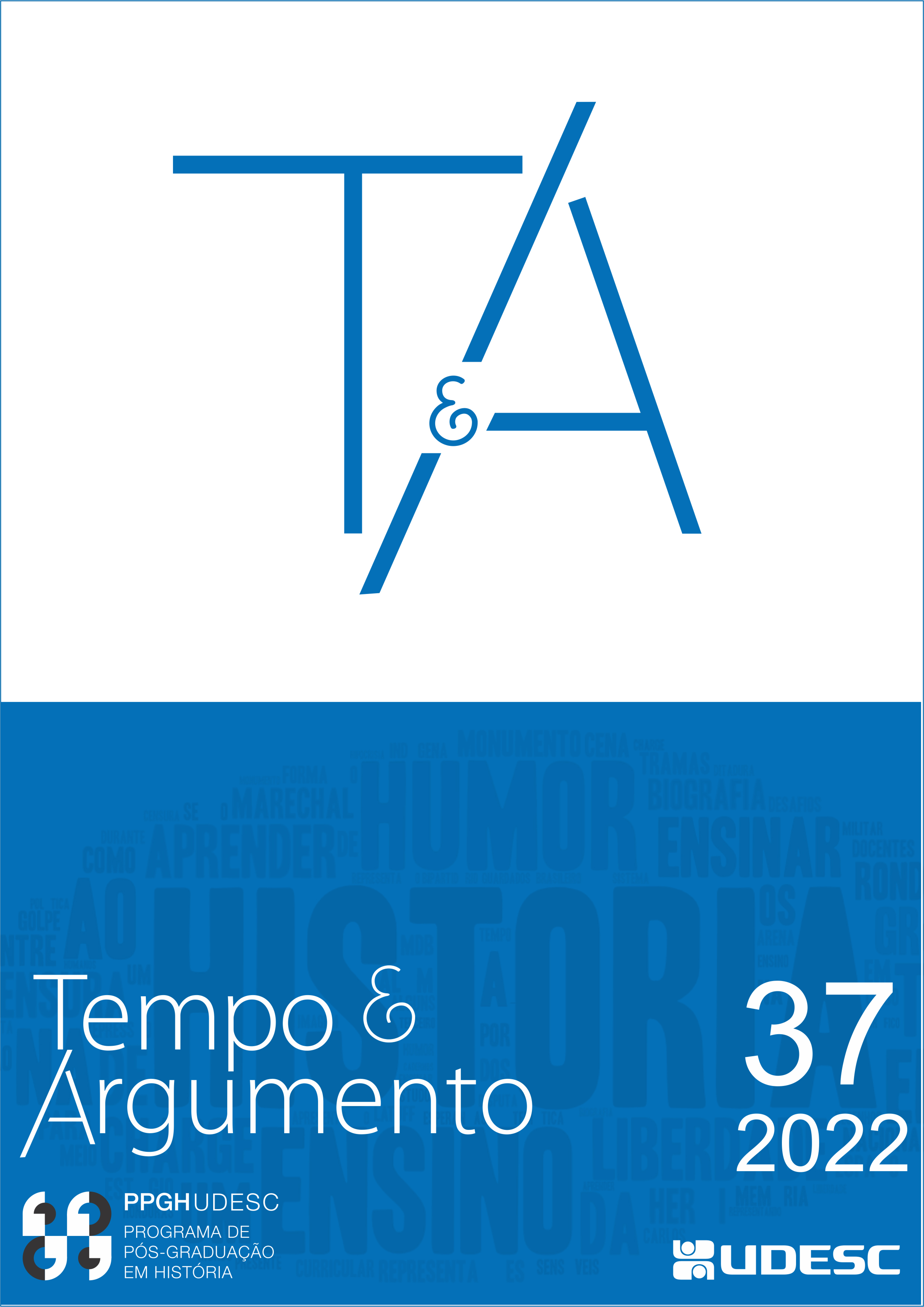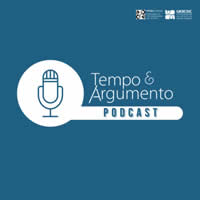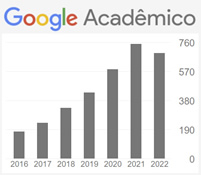From tonic for the elderly to performance enhancer in children: the uses of Ritalin and the brain explanations to mental disorders
DOI:
https://doi.org/10.5965/2175180314372022e0305Keywords:
Ritalin, methylphenidate, ADHD, smart drugs, medicalization, pharmaceuticalisationAbstract
The present study aims to understand the roots of the current uses of Ritalin (methylphenidate) and how the explanations about neural backgrounds for mental disorders make the use of drugs acceptable and even desirable to “treat” behavioral problems and enhance academic performance. We discuss the Attention Deficit Hyperactivity Disorder (ADHA) diagnosis, which allowed the use of methylphenidate and other stimulants in children; how the drug was used over time, since entering the market in the 1950s; the role of the biological explanations about the brain in emergence of ADHD as a psychiatric diagnosis treatable with drugs; and how these issues result in prescribing and using methylphenidate to enhance cognitive performance. Finally, we argue that the beliefs in neural background to mental disorders may create relevant social consequences: the relativization of social issues related to suffering; a tendency of trying to prevent “threats” through treatment and stigmatization of individuals considered in risk for mental distress; physical and neural damages due to exceeded and/or long-term use of psychoactive drugs, among others.
Downloads
References
APA. American Psychological Association. DSM-5: manual diagnóstico e estatístico de transtornos mentais. Porto Alegre: Artmed, 2014.
APA. American Psychological Association. DSM-III: diagnostic and statistical manual of mental disorders. 3. ed. Washington, DC: APA, 1980.
ARNOLD, Eugene; KIRILCUK, Vladimir; CORSON, Samuel; CORSON, Elizabeth. Levoamphetamine and dextroamphetamine: differential effect on aggression and hyperkinesis in children and dogs. The American Journal of Psychiatry, [s.l.], v. 130, n. 2, p. 165-170, 1973.
AYD, Frank. Protracted administration of methylphenidate (ritalin): clinical and laboratory survey of fifty patients. Psychosomatics, [s.l.], v. 5, n. 3, p. 180-187, 1964.
BARE, Wesley. A stimulant for the aged: observations on a combination (ritonic) methylphenidate-vitamin-hormone. Journal of the American Geriatrics Society, New York, v. 8, p. 292-297, 1960.
BENSON, Kari; FLORY, Kate; HUMPHREYS, Kathryn; LEE, Steve. Misuse of stimulant medication among college students: a comprehensive review and meta-analysis. Clinical Child and Family Psychology Review, [s.l.], v. 18, p. 50-76, 2015.
BORTOLUZZI, E.; ROELLA, C.; LONGONI BORTOLUZZI, S.; MONTOLI, E. Methylphenidate in the treatment of shivering. Anesthesia & Analgesia, [s.l.], v. 42, n. 3, p. 325-331, 1963.
BRACHFELD, Jonas; MYERSON, Ralph. Treatment of cardiogenic shock and vasopressor dependency with intravenous methylphenidate (ritalin). The American Journal of Cardiology, [s.l.], v. 15, p. 665-667, 1965.
BRZOZOWSKI, Fabíola Stolf. Transtorno de Deficit de Atenção com Hiperatividade: medicalização, classificação e controle dos desvios. 2009. Mestrado Universidade Federal de Santa Catarina, Florianópolis, 2009.
BRZOZOWSKI, Fabíola Stolf; CAPONI, Sandra. Da encefalite letárgica ao Transtorno de Déficit de Atenção com Hiperatividade (TDAH): emergência e consolidação das explicações biológicas reducionistas. Gavagai, v. 2, n. 2, p. 26–39, 2014.
BRZOZOWSKI, Fabiola Stolf; CAPONI, Sandra. Medicamentos estimulantes: uso e explicações em casos de crianças desatentas e hiperativas. Cadernos Brasileiros de Saúde Mental/Brazilian Journal of Mental Health, v. 7, n. 15, p. 01–23, 2015.
BRZOZOWSKI, Fabíola Stolf; DIEHL, Eliana E. Transtorno de Déficit de Atenção/Hiperatividade: o diagnóstico pode ser terapêutico? Psicologia em Estudo, v. 18, n. 4, p. 657–65, 2013.
CAPONI, Sandra. O DSM-V como dispositivo de segurança. Physis, Rio de Janeiro, v. 24, n. 3, p. 741-763, 2014.
CAPONI, Sandra. Uma sala tranquila: neurolépticos para uma biopolítica da indiferença. São Paulo: LiberArs, 2019.
CAPUTE, Arnold; NIEDERMEYER, Ernst; RICHARDSON, Frederick. The electroencephalogram in children with minimal cerebral dysfunction. Pediatrics, [s.l.], v. 41, p. 1104-1114, 1968.
CHAN, Eugenia; FOGLER, Jason; HAMMERNESS, Paul. Treatment of attention-deficit/hyperactivity disorder in adolescents: a systematic review. JAMA - Journal of the American Medical Association, [s.l.], v. 315, n. 18, p. 1997-2008, 2016.
COLE, Sherwood. Hyperkinetic children: the use of stimulant drugs evaluated. American Journal of Orthopsychiatry, Washington DC, v. 45, n. 1, p. 28-37, 1975.
CONNERS, Keith; EISENBERG, Leon. The effects of methylphenidate on symptomatology and learning in disturbed children. The American Journal of Psychiatry, [s.l.], v. 120, p. 458-464, 1963.
DARDOT, Pierre; LAVAL, Christian. A nova razão do mundo: ensaio sobre a sociedade neoliberal. São Paulo: Boitempo, 2016.
EICHLSEDER, Walter. Ten years of experience with 1,000 hyperactive children in a private practice. Pediatrics, [s.l.], v. 76, n. 2, p. 176-184, 1985.
EISENBERG, Leon. The management of the hyperkinetic child. Developmental Medicine & Child Neurology, [s.l.], v. 8, p. 593-598, 1966.
FARAONE, Stephen; BUITELAAR, Jan. Comparing the efficacy of stimulants for ADHD in children and adolescents using meta-analysis. European Child and Adolescent Psychiatry, [s.l.], v. 19, n. 4, p. 353-364, 2010.
FERGUSON, John. Successful therapeutic regimen for the management of behavior problems in the elderly. Journal of the American Geriatrics Society, [s.l.], v. 4, n. 11, p. 1080-1084, 1956.
FINDLING, Robert. Evolution of the treatment of attention-deficit/hyperactivity disorder in children: a review. Clinical Therapeutics, [s.l.], v. 30, n. 5, p. 942-957, 2008.
FITZGERALD, Michael; BELLGROVE, Mark; GILL, Michael. Handbook of attention deficit hyperactivity disorder. West Sussex: John Wiley & Sons, Ltd, 2007.
GLORIA-GARCÉS, Carmen; VEDANA, Kelly Graziani Giacchero. Consumo de estimulantes del sistema nervioso central en estudiantes de enfermería y medicina de una universidad chilena. SMAD, Revista Eletrônica Saúde Mental Álcool e Drogas, Ribeirão Preto, v. 9, n. 2, p. 64-69, 2013.
HALL, Kristina M.; IRWIN, Melissa M.; BOWMAN, Krista A.; FRANKENBERGER, William; JEWETT, David C. Illicit use of prescribed stimulant medication among college students. Journal of American College Health, [s.l.], v. 53, n. 4, p. 167-174, 2005.
JACOBSON, Avrohm. The use of ritalin in psychotherapy of depressions of the aged. The Psychiatric quarterly, [s.l.], v. 32, n. 3, p. 474-483, 1958.
KANNER, Leo. The thirty-third Maudsley Lecture: trends in child psychiatry. The Journal of Mental Science, [s.l.], v. 105, n. 440, p. 581-593, 1959.
KORTEKAAS-RIJLAARSDAM, Anne Fleur; LUMAN, Marjolein; SONUGA-BARKE, Edmund; OOSTERLAAN, Jaap. Does methylphenidate improve academic performance? A systematic review and meta-analysis. European Child and Adolescent Psychiatry, [s.l.], v. 28, n. 2, p. 155-164, 2019.
LEAKE, Chauncey. Newer stimulant drugs. The American Journal of Nursing, [s.l.], v. 58, n. 7, p. 966-968, 1958.
MAIER, Larissa; FERRIS, Jason; WINSTOCK, Adam. Pharmacological cognitive enhancement among non-ADHD individuals: a cross-sectional study in 15 countries. International Journal of Drug Policy, [s.l.], v. 58, p. 104-112, 2018.
MARTINHAGO, Fernanda; CAPONI, Sandra. Breve história das classificações em psiquiatria. INTERthesis, Florianópolis, v. 16, n. 1, p. 74-91, 2019.
MOERMAN, Daniel. Meaning, medicine and the ‘placebo effect’. United Kingdom: Cambridge University Press, 2002.
MONCRIEFF, Joanna. Magic bullets for mental disorders: the emergence of the concept of an “antipsychotic” drug. Journal of the History of the Neurosciences, [s.l.], v. 22, p. 30-46, 2013.
MORGAN, Henri Luiz; PETRY, Arthur Franzen; AFONSO, Pedro; LICKS, Keller; BALLESTER, Artur Oliveira; TEIXEIRA, Kellwin Nery; DUMITH, Samuel. Consumo de Estimulantes Cerebrais por Estudantes de Medicina de uma Universidade do Extremo Sul do Brasil: Prevalência, Motivação e Efeitos Percebidos. Revista Brasileira de Educação Médica, [s.l.], v. 41, n. 1, p. 102-109, 2017.
MTA. The MTA Cooperative Group. A 14-month randomized clinical trial of treatment strategies for attention-deficit/hyperactivity disorder. Archives of General Psychiatry, [s.l.], v. 56, p. 1073-1086, 1999.
NATENSHON, Adolph. Ritonic: a new geriatric supplement. Journal of the American Geriatrics Society, New York, v. 6, n. 7, p. 534-538, 1958.
PASTURA, Giuseppe; MATTOS, Paulo; ARAÚJO, Alexandra Prufer de Queiroz Campos. Prevalência do Transtorno do Déficit de Atenção e Hiperatividade e suas comorbidades em uma amostra de escolares. Arquivos de Neuropsiquiatria, São Paulo, v. 65, n. 4-A, p. 1078-1083, 2007.
PIGNARRE, Philippe. Comment la dépression est devenue une épidémie. Paris: Hachette Littératures, 2001.
RAFALOVICH, Adam. The conceptual history of attention deficit hyperactivity disorder: idiocy, imbecility, encephalitis and the child deviant, 1877-1929. An Interdisciplinary Journal, Washington DC, v. 22, p. 93-115, 2001.
RAGAN, C. Ian; BARD, Imre; SINGH, Ilina. What should we do about student use of cognitive enhancers? an analysis of current evidence. Neuropharmacology, [s.l.], v. 64, p. 588-595, 2013.
ROSE, Nikolas. Our psychiatric future: the politics of mental health. Cambridge: Polity Press, 2019.
RUTTER, Michael. Syndromes attributed to “minimal brain dysfunction” in childhood. The American Journal of Psychiatry, [s.l.], v. 139, n. 1, p. 21-33, 1982.
SIGNOR, Rita Cassia Fernandes; BERBERIAN, Ana Paulo; SANTANA, Ana Paula. A medicalização da educação: implicações para a constituição do sujeito/aprendiz. Educacao e Pesquisa, São Paulo, v. 43, n. 3, p. 743-763, 2017.
SINGH, Ilina; KENDALL, Tim; TAYLOR, Clare; MEARS, Alex; HOLLIS, Chris; BATTY, Martin; KEENAN, Sinead. Young people’s experience of ADHD and stimulant medication: a qualitative study for the NICE guideline. Child and Adolescent Mental Health, [s.l.], v. 15, n. 4, p. 186-192, 2010.
STILL, George Frederic. Some abnormal psychical conditions in children: excerpts from three lectures. Journal of Attention Disorders, [s.l.], v. 10, n. 2, p. 126-136, 2006.
TETER, Christian; MCCABE, Sean Esteban; LAGRANGE, Kristy; CRANFORD, James; BOYD, Carol. Illicit use of specific prescription stimulants among college students: Prevalence, motives, and routes of administration. Pharmacotherapy, v. 26, n. 10, p. 1501–10, 2006.
TETREAULT, Leon. Evaluation comparée des effets subjectifs de la dextroamphétamine, du méthylphénidate et du placebo. Canadian Medical Association journal, [s.l.], v. 91, p. 61-66, 1964.
THOMAS, Rae; SANDERS, Sharon; DOUST, Jenny; BELLER, Elaine; GLASZIOU, Paul. Prevalence of attention-deficit/hyperactivity disorder: a systematic review and meta-analysis. Pediatrics, [s.l.], v. 135, n. 4, p. e994-e1001, 2015. Disponível em: https://pubmed.ncbi.nlm.nih.gov/25733754/. Acesso em: 12 dez 22.
TIMIMI, Sami. Pathological child psychiatry and the medicalization of childhood. New York: Brunner-Routledge, 2002.
VAN DER SCHANS, Jurjen; ÇIÇEK, Rukive; VARDAR, Sefike; BOS, Jens; DE VRIES, Tialling; HOEKSTRA, Pieter; HAK, Eelko. Methylphenidate use and school performance among primary school children: a descriptive study. BMC Psychiatry, [s.l.], v. 17, n. 1, p. 1-9, 2017.
WALK, Alexaner. The pre-history of child psychiatry. The British Journal of Psychiatry, [s.l.], v. 110, p. 754-767, 1964.
WILLIAMS, Simon; MARTIN, Paul; GABE, Jonathan. The pharmaceuticalisation of society? A framework for analysis. Sociology of Health and Illness, [s.l.], v. 33, n. 5, p. 710-725, 2011.
Downloads
Published
How to Cite
Issue
Section
License
Copyright (c) 2022 Tempo e Argumento

This work is licensed under a Creative Commons Attribution-NonCommercial 4.0 International License.
The articles published by the magazine are for free use, destined for educational purposes and not commercial. The copyrights are all granted to the magazine. The articles whose authors are identified represent the expressed opinion of its authors and not the official position of the Tempo e Argumento magazine or of the Postgraduate Program in History of the Universidade do Estado de Santa Catarina.




